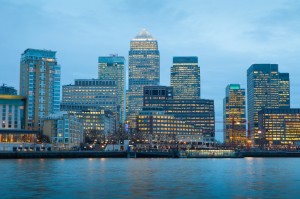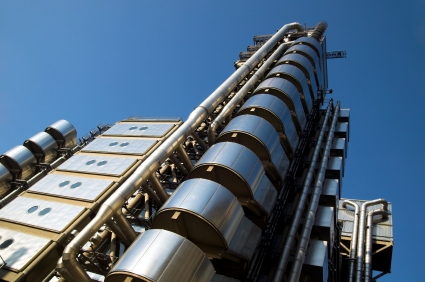 Buildings in London are often named after its design, such as The Shard in reference to its resemblance to shards of glass. Alternatively, many towers are named after their location or address to highlight a prestigious location such as One Canada Square. In some instances, office towers in London have been named after major tenants.
Buildings in London are often named after its design, such as The Shard in reference to its resemblance to shards of glass. Alternatively, many towers are named after their location or address to highlight a prestigious location such as One Canada Square. In some instances, office towers in London have been named after major tenants.
The innovative Lloyd’s Building is often referred to informally as the Inside-Out Building. The office tower is home to insurance firm Lloyd’s of London, which owns and lends its name to the building’s name. The Lloyd’s Building was constructed on the site of the East India House on Lime Street, which once served as the London headquarters of the East India Company. Completed in 1986, the modern structure was designed by Richard Rogers and features electrical power conduits, water pipes, staircases and lifts on the outside. It also integrates elements from the original Lloyd’s building, including an eighteenth century dining room and early nineteenth century entrance that were moved from the previous Leadenhall Street location. The Shell Centre on the South Bank of the River Thames is also named after its main tenant. Completed in 1961, the office tower was the first to exceed the height of the Victoria Tower at the Palace of Westminster. The building was commissioned by oil giant Shell, which commissioned its construction. Other buildings named after corporations include the Willis Building, which is named after its main occupant, the Willis Group. Located opposite the Lloyd’s Building on Lime Street and completed in 2008, the tower features an elegant stepped design resembling the shell of a crustacean. Continue reading “London Office Buildings Named After A Major Company”

